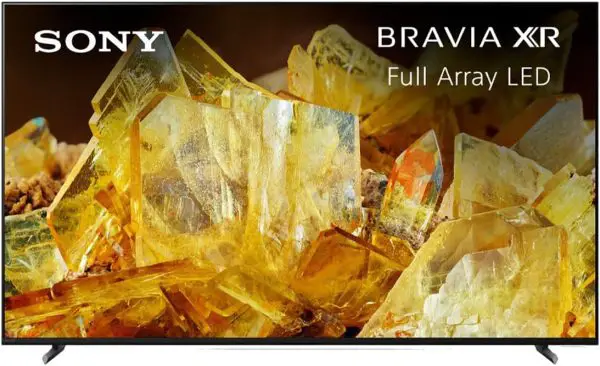
4k TV, also known as Ultra HD or UHD TV, refers to television displays that provide 4 times the amount of pixels as its predecessor the “Full HD” 1080p format. The 3840 x 2160 lines of resolution in 4k Ultra HD TVs are twice the amount of both vertical and horizontal lines of the 1920 x 1080p format. Therefore, Ultra HD provides 8.3 megapixels compared to the 2.1 megapixels of 1080p. Shop 4k TVs on Amazon
Ultra HD was defined on Oct. 17, 2012, when the CEA (Consumer Electronics Association) announced the term Ultra HD (Ultra High Definition) would be used for displays with a video resolution of 3840 x 2160 (8.3 megapixels).
Previous HDTV standards typically fall into two lower video resolutions that include 720p and 1080i. But those formats contain either fewer lines of resolution (720p) or are interlaced (1080i) rather than progressive (1080p). The difference between 1080i and 1080p is that the interlaced frames are not full images, but rather interlaced together to look as smooth as 1080p. 720p and 1080i are commonly used by local and cable broadcasts.
Most 4k Ultra HD TVs these days also support HDR “High Dynamic Range” which expands the color depth of TVs depending on the content. HDR formats found in streaming content and on 4k Blu-ray Discs include Dolby Vision, HDR10/HDR10+, and HLG — the format mainly used for live broadcasts. Most 4k HDR TVs can also simulate HDR in content that is not mastered with a standardized spec.
Ultra HD TV can also refer to broadcasts. Some networks and production companies have been producing 4k content that is supported by select service providers. In addition to 4k resolution, live broadcasts typically include HLG HDR for increased color depth. We’ve seen FIFA World Cup matches, NFL football games, and some college football broadcasts delivering HLG HDR.
The next jump in video resolution is 8k UHDTV at 7680 x 4320 (33.2 megapixels) which is 16-times the HDTV standard.

HDMI Standards
4k Ultra HD video can be enhanced with High Dynamic Range (HDR), a color specification that requires at least HDMI 2.0a cables and adds more color depth and contrast by expanding bit-depth in video on disc and digital. HDMI Version 2.1a was released on Feb. 15, 2022 and is suggested for current applications with support for a maximum transmission bit rate of 48 Gbps. For home theater applications, HDR is typically produced with either Dolby Vision or HDR10/HDR10+, but is also found in the HLG standard in live broadcasts. Learn more about HDR.
Also Read:
What is 4k Ultra HD resolution?
Is 4k resolution the same as 2160p?
What is HDR?
What is 8k Ultra HD TV?
